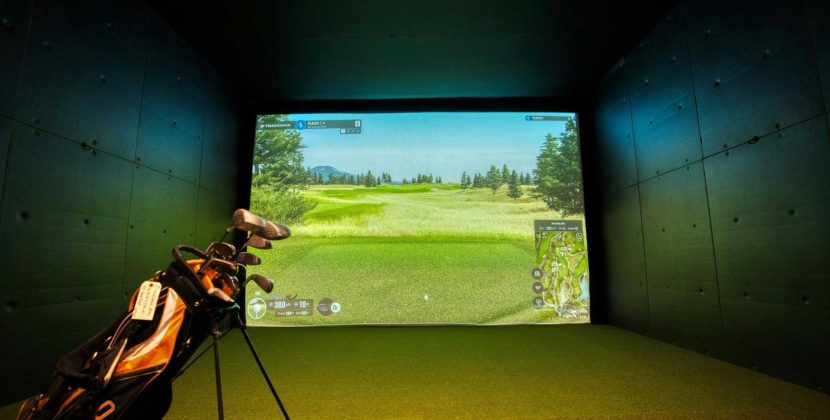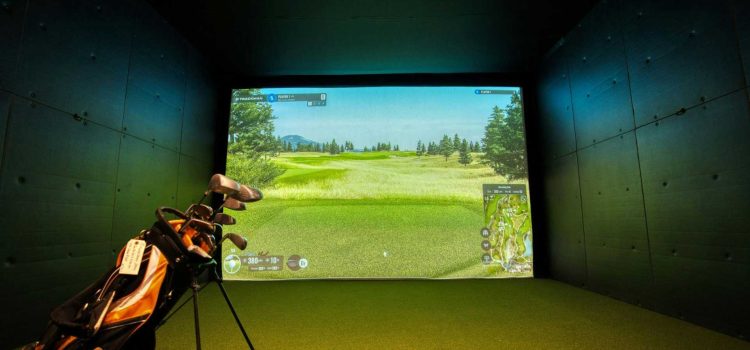
You have the latest driver, you have taken the lessons, and you practice your swing in the mirror. But on the course, something is still missing. What if the secret to a lower handicap is not in your swing, but in how you see the swing? Elite golf performance is as much a visual game as it is a physical one. Modern golf improvement involves two key players: the sports optometrist, who trains the eyes like any other muscle, and the indoor golf simulator, which provides the perfect, controlled environment to practice these new skills. This post will explore the powerful connection between optometric vision training and indoor golf simulators, breaking down the key visual skills essential for golf and providing practical exercises that golfers can use in a simulator to turn their eyes into their greatest asset on the course.
The Optometrist’s Playbook: The Key Visual Skills for Golf
Sports vision therapy is a specialized field that focuses on enhancing the visual skills critical for athletic performance. For golf, this goes far beyond simply seeing 20/20. One of the most important skills is dynamic visual acuity, which is the ability to maintain sharp focus on the ball even while your head and body are rotating at high speed through the swing. Another is depth perception, the skill that allows a golfer to accurately judge distances, “see” the subtle breaks on a green, and know exactly how far away that bunker really is. Without precise depth perception, distance control becomes a guessing game.
Two other crucial skills are eye tracking and focus flexibility. This involves the ability to smoothly follow the ball’s flight path after impact (pursuit tracking) and to rapidly shift sharp focus from the ball at your feet to the pin hundreds of yards away (saccadic tracking). This allows for better course management and shot visualization. Finally, peripheral vision is the subtle but vital ability to be aware of your body’s alignment and position in relation to the target line without having to move your head and lose focus on the ball. Mastering these visual skills is as important as mastering the mechanics of the swing itself.
The High-Tech Gym for Your Eyes: The Golf Simulator’s Role
An indoor golf simulator is more than just a place for entertainment; it is a sophisticated training tool for the visual aspects of the game. A simulator provides a perfectly controlled environment, eliminating variables like wind, changing cloud cover, and uneven lies. This creates a consistent, repeatable setting where a golfer can focus purely on visual tasks without the distractions of a real course. This level of control is impossible to achieve outdoors, making the simulator an ideal “gym” for the eyes.
The launch monitor provides instant, unbiased feedback on every shot, displaying data on ball speed, launch angle, and direction. This allows a golfer to directly correlate what they saw during their swing with the actual result, creating a powerful feedback loop for learning. If you felt your focus waver, the data might show an off-centre strike. Furthermore, a simulator allows for targeted, repetitive practice. If you need to work on your 150-yard approach shot, you can hit that exact shot over and over again. This is perfect for ingraining the specific visual habits and focus required for that distance, a task that would take hours on a real driving range.
The Synergy in Action: Vision Training Drills for the Simulator
This is where optometric principles and simulator technology come together. The first drill is the “Quiet Eye” Focus Drill, designed to improve acuity and tracking. Before starting the swing, the golfer stares intently at a single dimple on the back of the ball for a full three seconds. They must maintain this intense “quiet eye” focus through the entire swing, trying to “see” the club make contact with that exact spot. After the shot, the simulator’s data will instantly show if this heightened focus resulted in a more centred strike and a better outcome.
A second exercise is the “Distance Estimation” Challenge for depth perception. The golfer has the simulator set to a random par 3. Before looking at the provided yardage on the screen, they must stand back and make their best estimate of the distance to the pin. They then compare their estimate to the actual number. Repeating this drill trains the brain to better judge distances in the 3D virtual space, a skill that translates directly to the real course. A third exercise, the “Target-Ball-Target” Drill, trains focus flexibility. During the pre-shot routine, the golfer practices rapidly shifting focus: look at the virtual pin, snap focus back to the ball, then look back to the pin one last time before starting the swing. This trains the quick eye movements needed for good course management.
The Payoff: Taking Your New Vision to the Course
The benefits of this focused, simulator-based vision training become clear when you step back onto a real golf course. Enhanced visual focus and acuity, trained through drills like the “Quiet Eye,” lead directly to more consistent, centred contact with the ball. This means better ball speed, more predictable distance, and tighter accuracy on all shots. A sharper short game is another major payoff. Finely-tuned depth perception, honed through estimation challenges, translates directly to better feel and distance control on delicate chips, pitches, and, most importantly, on the putting green.
Ultimately, these visual skills lead to smarter course management. Improved eye tracking and focus flexibility allow a golfer to better visualize the desired shot shape, pick more effective targets, and commit to their swing with a higher degree of confidence. Instead of just hitting the ball, the player is able to see the shot they want to hit and then execute it. This mental and visual clarity is often the missing piece that separates good golfers from great ones. The work done in the simulator builds a foundation of visual confidence that holds up under pressure.
See the Game, Change Your Game
The future of golf improvement lies in the synergy between understanding the science of vision and using modern technology to train it. The investment in vision training and simulator practice is a proactive step that addresses a fundamental, and often ignored, aspect of the game. Do not let your eyes be the weakest link in your golf game. Consult with a sports optometrist to understand your visual strengths and weaknesses. Then, step into a golf simulator not just to play, but to practice seeing. The results on your scorecard will be clear.














